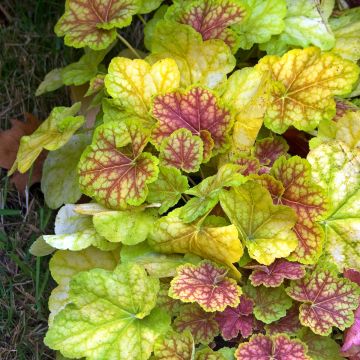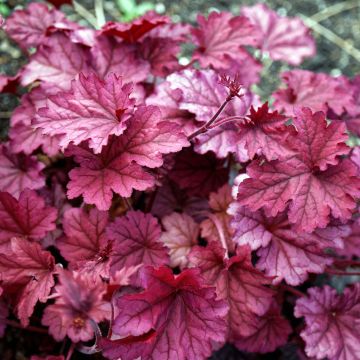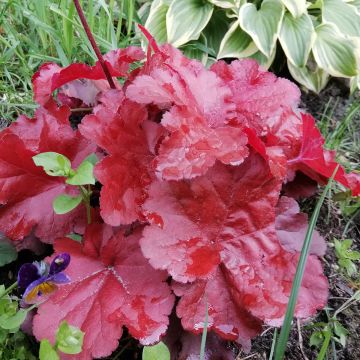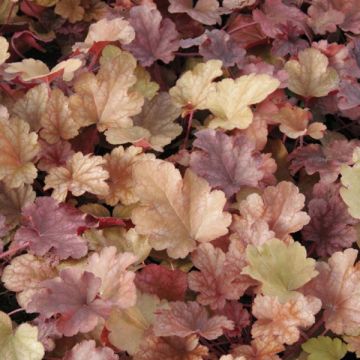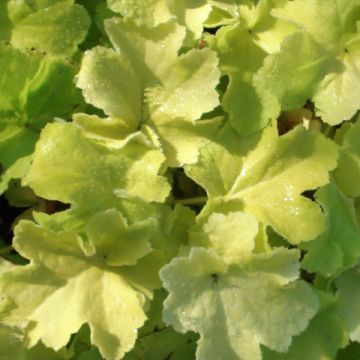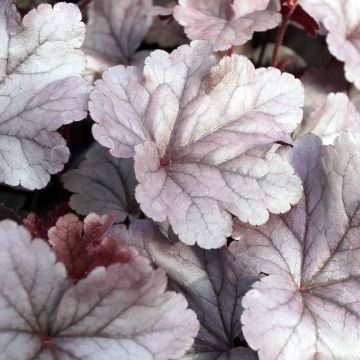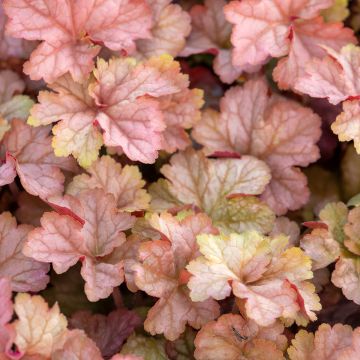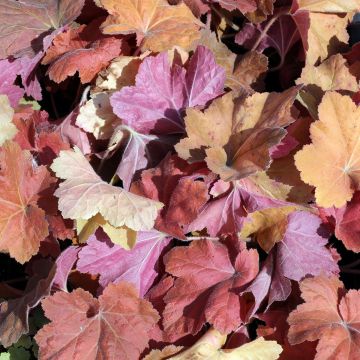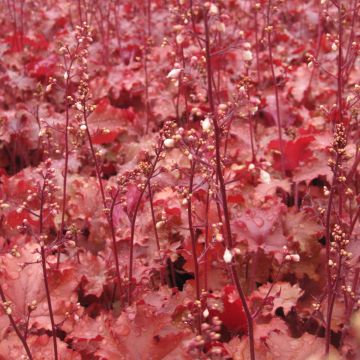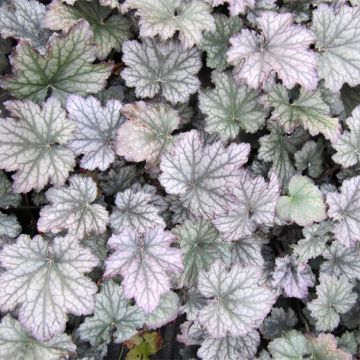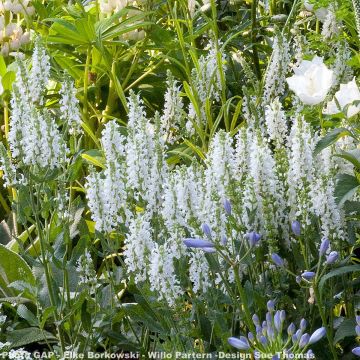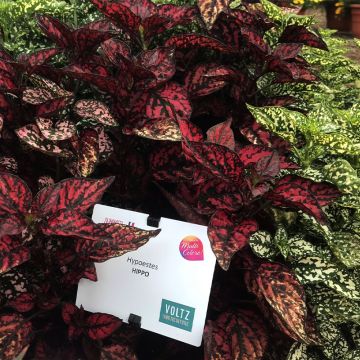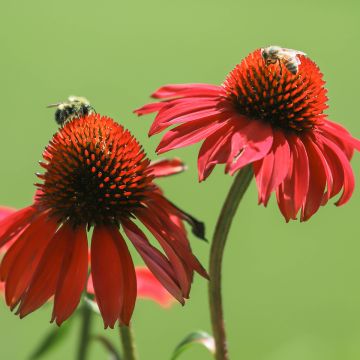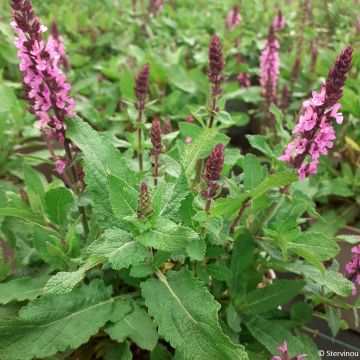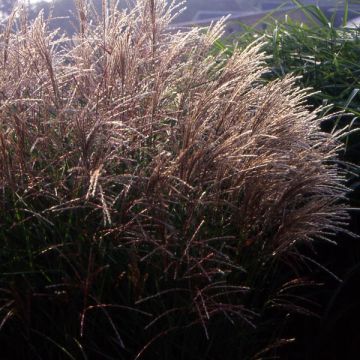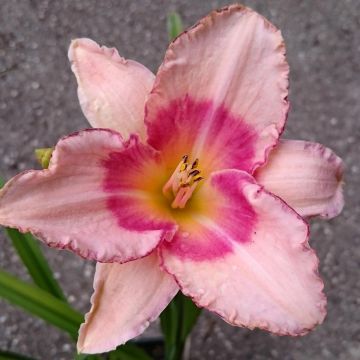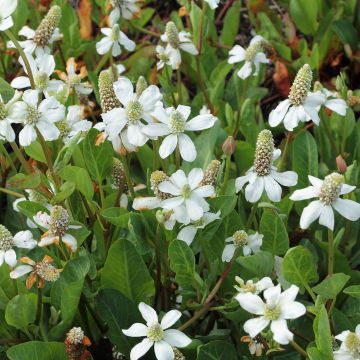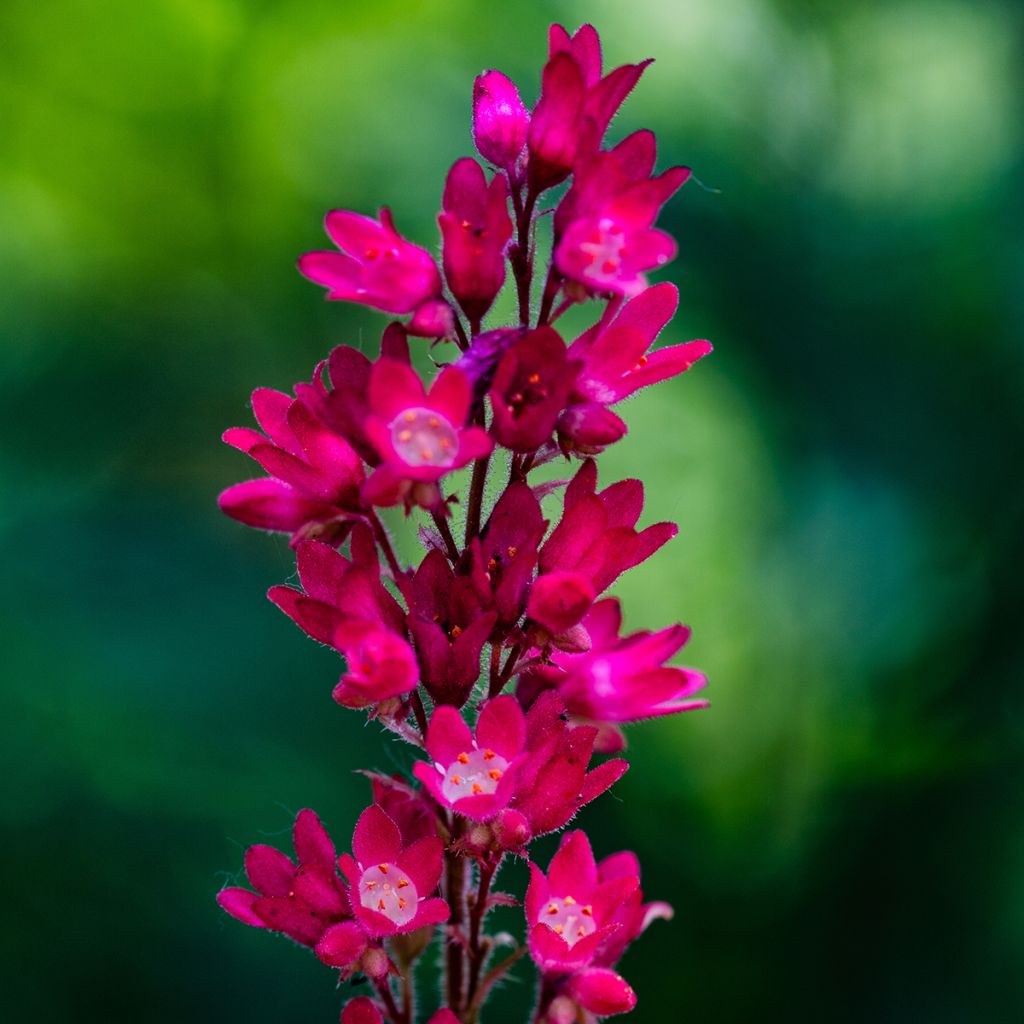

Heuchera sanguinea 'Leuchtkäfer'
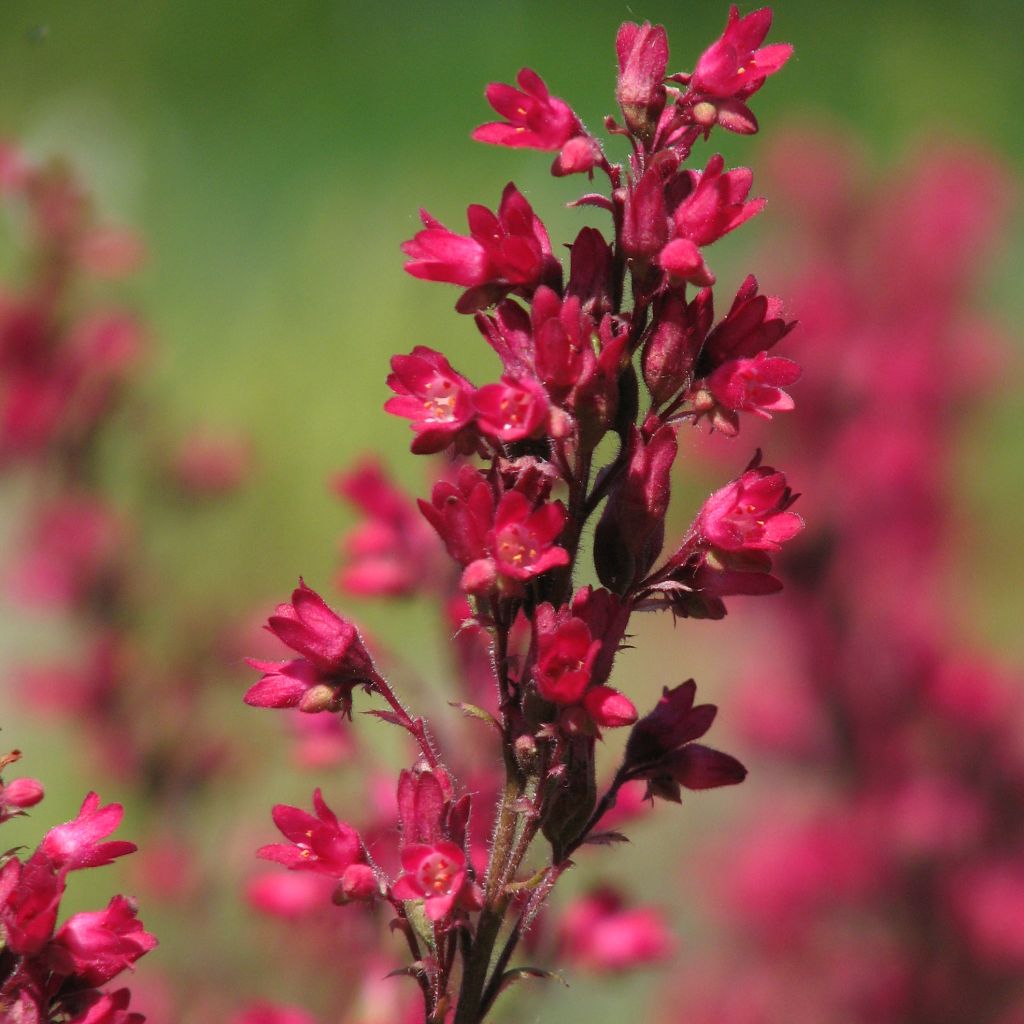

Heuchera sanguinea 'Leuchtkäfer'
Heuchera sanguinea 'Leuchtkäfer'
Heuchera sanguinea Leuchtkäfer
Coral Bells, Bloody Heuchera
plants arrived in perfect condition and very quickly
eliane, 22/06/2025
Special offer!
Receive a €20 voucher for any order over €90 (excluding delivery costs, credit notes, and plastic-free options)!
1- Add your favorite plants to your cart.
2- Once you have reached €90, confirm your order (you can even choose the delivery date!).
3- As soon as your order is shipped, you will receive an email containing your voucher code, valid for 3 months (90 days).
Your voucher is unique and can only be used once, for any order with a minimum value of €20, excluding delivery costs.
Can be combined with other current offers, non-divisible and non-refundable.
Home or relay delivery (depending on size and destination)
Schedule delivery date,
and select date in basket
This plant carries a 12 months recovery warranty
More information
We guarantee the quality of our plants for a full growing cycle, and will replace at our expense any plant that fails to recover under normal climatic and planting conditions.
Would this plant suit my garden?
Set up your Plantfit profile →
Description
Heuchera sanguinea 'Leuchtkäfer', also known as Bloody Geranium or poetically Despair of Painters, is a luminous plant. It is distinguished by its bright and abundant summer flowering in dark scarlet red flower panicles, large for the genus. It emerges from a dense cushion of dark green foliage marbled with silver, evergreen, rounded and lightly lobed. It is a recent cultivar that adapts well to limestone soils and is more drought-resistant.
Heuchera sanguinea 'Leuchtkäfer' belongs to the saxifraga family. Heuchera sanguinea, from which it originates, is found in nature from Arizona to New Mexico, where it grows in arid canyons. It has passed on to its descendants, mutations and hybrids a certain resistance to drought. 'Leuchtkäfer' is a low and spreading cushion-shaped cultivar. The plant reaches 60 cm (24in) in height when flowering, 30 cm (12in) for the foliage, and 40 cm (0 and 16in) in diameter. The flowering, melliferous and fragrant, takes place in June-July. Thin stems emerge from the foliage, bearing panicles 15 cm (6in) long, consisting of numerous tubular flowers in dark scarlet to crimson, large for the genus. The rounded leaves, lightly lobed and toothed on the edges, are covered with glandular hairs and are dark green marbled with light silver and pale green. It is a perennial plant with a rhizomatous root system with a shallow root system.
'Leuchtkäfer', the name of the variety, means firefly in German, a reference to its luminous foliage with its silver reflections. Plant it at the base of old roses with light pink flowers, whose light and bright flowering will amaze. It can also be used as ground cover to fill the base of spring-flowering shrubs and will thrive in a cool rockery. In a border, this heuchera energizes the garden. Combine it with hostas, grasses, and ferns for a wild effect. Place a contrasting mulch at its feet in a rock garden to highlight its beautiful foliage. Pair this heuchera with blue flowers, the only shade it lacks, and it will be a perfect complement. Heuchera is ideal for filling pots, containers, and flower beds. A good cut flower, the graceful bells of this plant bring a lot of lightness to bouquets.
In all European gardens, heucheras with trembling stems and tiny bells were fashionable in the 19th century. They were named "Despair of Painters" by the Impressionist painters, perhaps because of their delicate flowering that was difficult to capture in an image, swaying at the slightest breeze.
Report an error about the product description
Heuchera sanguinea 'Leuchtkäfer' in pictures
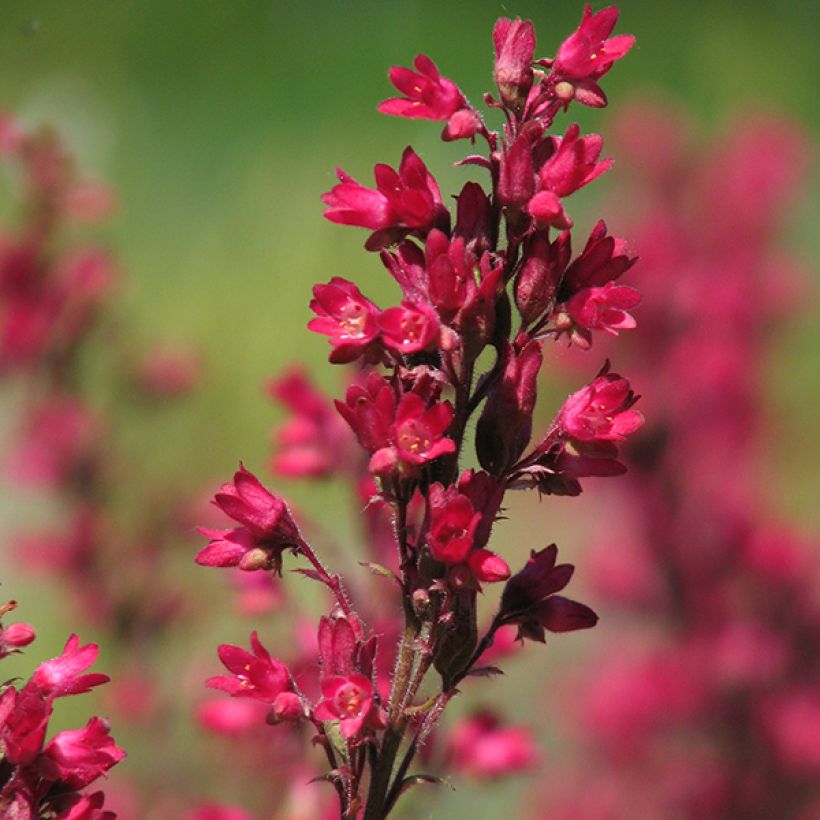

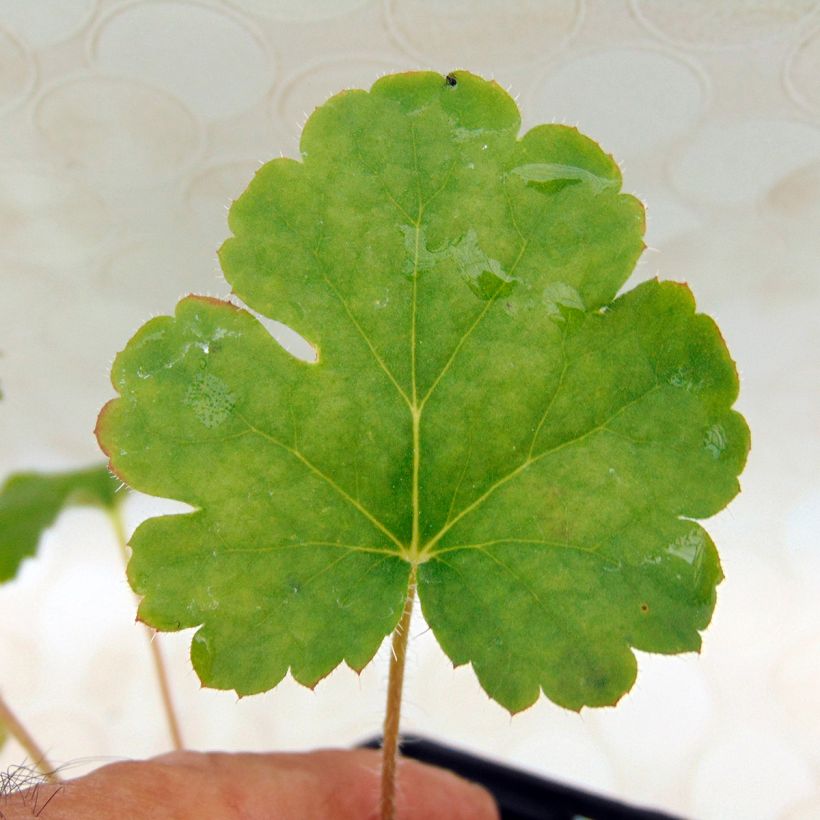

Flowering
Foliage
Plant habit
Botanical data
Heuchera
sanguinea
Leuchtkäfer
Saxifragaceae
Coral Bells, Bloody Heuchera
Cultivar or hybrid
Other Heuchera
View all →Planting and care
Easy to maintain, the 'Leuchtkäfer' Bloodleaf thrives in all well-drained, moist soils; in light sun or partial shade, it is imperative to avoid scorching full sun. Plant it in loose, even limestone soil, occasionally dry in the shade. It can be beneficial to provide mulch. Incorporate leaf compost and coarse sand into the planting soil in heavy soil. It likes well-drained soil and rocks in and above the ground. However, it cannot tolerate excessively hot conditions. For this reason, it is not commonly grown in warmer regions. Clay and heavy soils are not suitable for this variety. Also, avoid planting it near overly vigorous perennials.
Planting period
Intended location
Care
-
, onOrder confirmed
Reply from on Promesse de fleurs
Similar products
Haven't found what you were looking for?
Hardiness is the lowest winter temperature a plant can endure without suffering serious damage or even dying. However, hardiness is affected by location (a sheltered area, such as a patio), protection (winter cover) and soil type (hardiness is improved by well-drained soil).

Photo Sharing Terms & Conditions
In order to encourage gardeners to interact and share their experiences, Promesse de fleurs offers various media enabling content to be uploaded onto its Site - in particular via the ‘Photo sharing’ module.
The User agrees to refrain from:
- Posting any content that is illegal, prejudicial, insulting, racist, inciteful to hatred, revisionist, contrary to public decency, that infringes on privacy or on the privacy rights of third parties, in particular the publicity rights of persons and goods, intellectual property rights, or the right to privacy.
- Submitting content on behalf of a third party;
- Impersonate the identity of a third party and/or publish any personal information about a third party;
In general, the User undertakes to refrain from any unethical behaviour.
All Content (in particular text, comments, files, images, photos, videos, creative works, etc.), which may be subject to property or intellectual property rights, image or other private rights, shall remain the property of the User, subject to the limited rights granted by the terms of the licence granted by Promesse de fleurs as stated below. Users are at liberty to publish or not to publish such Content on the Site, notably via the ‘Photo Sharing’ facility, and accept that this Content shall be made public and freely accessible, notably on the Internet.
Users further acknowledge, undertake to have ,and guarantee that they hold all necessary rights and permissions to publish such material on the Site, in particular with regard to the legislation in force pertaining to any privacy, property, intellectual property, image, or contractual rights, or rights of any other nature. By publishing such Content on the Site, Users acknowledge accepting full liability as publishers of the Content within the meaning of the law, and grant Promesse de fleurs, free of charge, an inclusive, worldwide licence for the said Content for the entire duration of its publication, including all reproduction, representation, up/downloading, displaying, performing, transmission, and storage rights.
Users also grant permission for their name to be linked to the Content and accept that this link may not always be made available.
By engaging in posting material, Users consent to their Content becoming automatically accessible on the Internet, in particular on other sites and/or blogs and/or web pages of the Promesse de fleurs site, including in particular social pages and the Promesse de fleurs catalogue.
Users may secure the removal of entrusted content free of charge by issuing a simple request via our contact form.
The flowering period indicated on our website applies to countries and regions located in USDA zone 8 (France, the United Kingdom, Ireland, the Netherlands, etc.)
It will vary according to where you live:
- In zones 9 to 10 (Italy, Spain, Greece, etc.), flowering will occur about 2 to 4 weeks earlier.
- In zones 6 to 7 (Germany, Poland, Slovenia, and lower mountainous regions), flowering will be delayed by 2 to 3 weeks.
- In zone 5 (Central Europe, Scandinavia), blooming will be delayed by 3 to 5 weeks.
In temperate climates, pruning of spring-flowering shrubs (forsythia, spireas, etc.) should be done just after flowering.
Pruning of summer-flowering shrubs (Indian Lilac, Perovskia, etc.) can be done in winter or spring.
In cold regions as well as with frost-sensitive plants, avoid pruning too early when severe frosts may still occur.
The planting period indicated on our website applies to countries and regions located in USDA zone 8 (France, United Kingdom, Ireland, Netherlands).
It will vary according to where you live:
- In Mediterranean zones (Marseille, Madrid, Milan, etc.), autumn and winter are the best planting periods.
- In continental zones (Strasbourg, Munich, Vienna, etc.), delay planting by 2 to 3 weeks in spring and bring it forward by 2 to 4 weeks in autumn.
- In mountainous regions (the Alps, Pyrenees, Carpathians, etc.), it is best to plant in late spring (May-June) or late summer (August-September).
The harvesting period indicated on our website applies to countries and regions in USDA zone 8 (France, England, Ireland, the Netherlands).
In colder areas (Scandinavia, Poland, Austria...) fruit and vegetable harvests are likely to be delayed by 3-4 weeks.
In warmer areas (Italy, Spain, Greece, etc.), harvesting will probably take place earlier, depending on weather conditions.
The sowing periods indicated on our website apply to countries and regions within USDA Zone 8 (France, UK, Ireland, Netherlands).
In colder areas (Scandinavia, Poland, Austria...), delay any outdoor sowing by 3-4 weeks, or sow under glass.
In warmer climes (Italy, Spain, Greece, etc.), bring outdoor sowing forward by a few weeks.






























